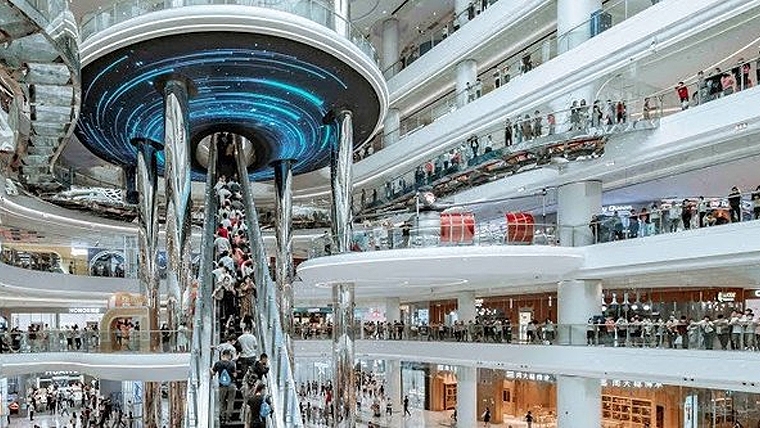
By Mark Tanner*
Earlier this month, The Conversation published an article titled, “The US invented shopping malls, but China is writing their next chapter”. It follows a similar theme that we’ve seen in other areas such as mobile apps; while China was late to the game and initially replicated what worked overseas, it has since innovated tons of new features that are now copied in other markets.
Shopping malls in China have followed the country’s grand scale of growth. By the end of last year, there were 7,100 shopping malls in China, averaging over 30,000 square metres in size – the equivalent of more than four football fields. But there are some giants. The New South China Mall in Dongguan is 660,000m2, twice the size of the biggest mall in the US, Minnesota’s Mall of America.
Unlike the old model of squeezing as many stores as possible under one roof, China’s malls usually provide a much more rounded experience for consumers. In the 400 new malls that opened in China last year, many dedicated around a fifth of space to recreation, not shopping. Chinese malls need to compete head on with the world’s most advanced ecommerce platforms, and provide a worthy-enough experience to draw the screen-addicted population away from their smart phones.
Working in favour of the mall is that much of China can be frosty in the winter, and like a furnace in the summer. Shopping centres have become the go-to shelter for many Chinese to connect socially in the real world, be fed and entertained all while escaping the elements.
If you want a snapshot of what’s trending in China, you will see it in its malls. Tapping into Chinese consumers’ love of their pets, the Raffles City Mall in Shenzhen has a rooftop pet playground coupled with a stage, art display area and sun-shaded lawn. Playing to the rise of snow sports, the Dream Time Mall in Wuhan boasts an indoor snow centre that offers ski lessons, ice mazes and tubing. The popularity of domestic EV brands is seeing countless new car showrooms in malls. The perennial doting on kids from six ‘parents’ sees numerous extravagant children’s play centres, petting zoos and similar attractions.
Experience is the main drawcard for many malls, with art museums, dance studios, cooking classes, giant inflatable figures, paddling pools, skating rinks, gyms, yoga centres, go-kart tracks, virtual reality and multi-player esports zones.
For brands looking to reach their customers, these malls already have a captive audience which could align with their positioning and target audience. This is particularly relevant for brands aiming to tap into consumers’ emotions and interests. It is not unusual to see brands reaching customers at a grass-roots level in malls, rolling out a few KOLs on stage and having a few hours to make a bang. It is generally much lower-cost than a pop-up.
Stores in malls also allow brands to provide immersive experiences through integrating digital touch points. In addition to building brand preference, this can drive sharing on social media and help build a fanbase.
Malls often contain the brick & mortar stores which are a key component of China’s rising o2o trend. Last year, ordering online from offline stores saw growth far exceed traditional ecommerce growth of 11%. The number of orders per person, and their spending has almost tripled since 2020, driven by the lucrative 25-35 aged segments.
Shopping malls are already a part of many foreign brands’ strategies in China, however many just replicate their approach to brick and mortar retail from overseas. Factoring in the unique experience of China’s malls should help better shape a strategy that utilizes the opportunities that are specific to China’s retail experience.
*Mark Tanner is the CEO of China Skinny, a marketing consultancy in Shanghai. This article was first published here, and is re-posted with permission.
2 Comments
Interesting insight thank you. The scale is impressive as is the idea of integrating other social activities; I think Westfield have some work to do but in fairness they have had movie theatres, food halls etc in their malls for some time.
Quite a few malls have amazing play areas for kids. Drop the kids off (hoping they'll not be kidnapped - alas, this does happen but not often) and you get to shop in peace (or simply have kid free meal).

We welcome your comments below. If you are not already registered, please register to comment
Remember we welcome robust, respectful and insightful debate. We don't welcome abusive or defamatory comments and will de-register those repeatedly making such comments. Our current comment policy is here.